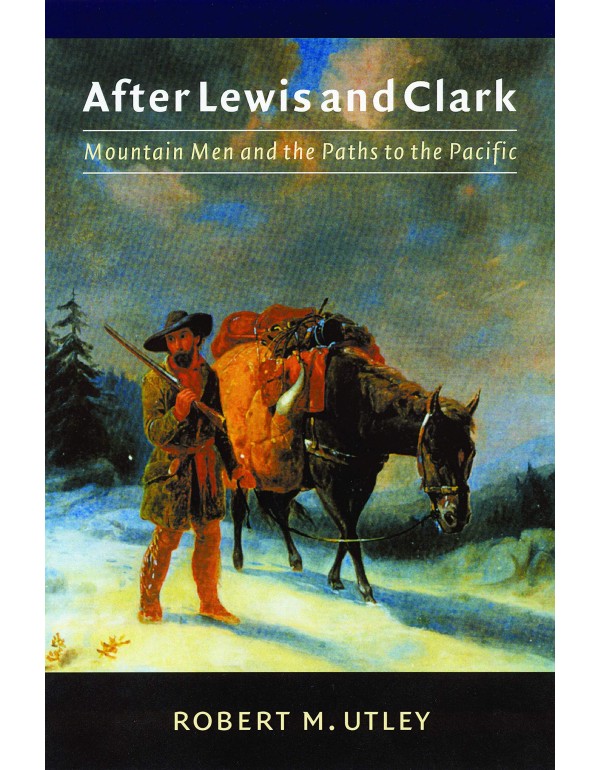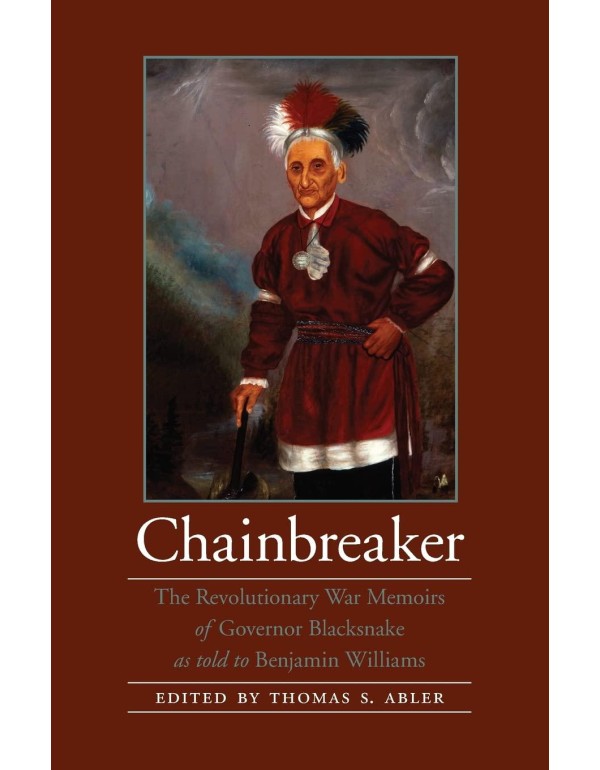Search
Products meeting the search criteria
$10 Horse, $40 Saddle: Cowboy Clothing, Arms, Tool...
$10.26
The cowboy of the open western range flourished from 1865 to about 1885. Despite his brief heyday, he made a permanent impression that has been perpetuated by dime novels, wild west shows, and horse operas. But the picture portrayed in popular media is often historically incorrect. Don Rickey Jr. re..
A Broken Mirror (European Women Writers)
$19.55
In its moment of great splendor the novel was held as a mirror of society: Mercè Rodoreda shatters that mirror in this, her most ambitious novel, which tells its story in brilliant fragments, a vision reflected and refracted and finally coming together in a richly articulated mosaic of life. Through..
A Cowboy Detective: A True Story of Twenty-two Yea...
$10.50
After years of cowboying, Charles A. Siringo had settled down to store-keeping in Caldwell, Kansas, when a blind phrenologist, traveling through, took the measure of his "mule head" and told him that he was "cut out" for detective work. Thereupon, Siringo joined the Pinkerton National Detective Agen..
A Pioneer's Search for an Ideal Home
$8.11
Phoebe Judson was a young bride in 1853 when she and her husband crossed the plains from Ohio to the Puget Sound area of Washington Territory. She was ninety-five when this book was first published in 1925. The years between were spent in “a pioneer’s search for an ideal home” and in living there, w..
A Sandhills Ballad
$9.20
After her life as she knows it ends in heartbreak, Mary Rasmussen, a strong-willed and independent young ranch woman living in the Sandhills of western Nebraska, suddenly feels that everything she has believed in-God, her instincts, the land itself-has failed her. She abandons her cultural and emoti..
Afro-Cuban Tales
$14.14
As much a storyteller as an ethnographer, Lydia Cabrera was captivated by a strange and magical new world revealed to her by her Afro-Cuban friends in early twentieth-century Havana. In Afro-Cuban Tales this world comes to teeming life, introducing English-speaking readers to a realm of tenuous boun..
After Lewis and Clark: Mountain Men and the Paths ...
$14.19
In 1807, a year after Lewis and Clark returned from the shores of the Pacific, groups of trappers and hunters began to drift West to tap the rich stocks of beaver and to trade with the Native nations. Colorful and eccentric, bold and adventurous, mountain men such as John Colter, George Drouillard, ..
All the Strange Hours: The Excavation of a Life
$8.70
A native of Lincoln, Nebraska, Loren Eiseley began his lifelong exploration of nature in the salt flats and ponds around his hometown and in the mammoth bone collection hoarded in the old red brick museum at the University of Nebraska, where he conducted his studies in anthropology. It was in pursui..
And the Walls Came Tumbling Down: The Basketball G...
$9.19
Book by Fitzpatrick, Frank Author: Fitzpatrick, Frank Publisher: Bison Books Binding: Paperback Language: English ISBN-10: 0803269013 ISBN-13: 9780803269019..
Art for Art's Sake & Literary Life (Stages)
$14.68
Art for Arts Sake and Literary Life is a history of literary aestheticism from the eighteenth century to modern deconstruction. Gene H. Bell-Villada examines writings by critics, philosophers, and other writers from Europe, Latin America, and the United States. Uniting all is his conviction that “th..
Bent's Fort
$9.32
Bent's Fort was a landmark of the American frontier, a huge private fort on the upper Arkansas River in present southeastern Colorado. Established by the adventurers Charles and William Bent, it stood until 1849 as the center of the Indian trade of the central plains. David Lavender's chronicle of t..
Big Bear: The End of Freedom
$9.98
Big Bear was born near Jackfish Lake in about 1825. In the course of his long life, he saw the disappearance of the buffalo, the increasing incursion of white settlers into the North-West, and the end of the way of life that First Nations had known for millennia. His adherence to traditional customs..
Black Cadet in a White Bastion: Charles Young at W...
$11.01
Born in slavery, Charles Young (1864-1922) was the third black graduate of West Point, the first black U.S. military attaché, and the highest-ranking black officer in the Regular Army until his death. Unlike the two black graduates before him, Young went on to a long military career, eventually achi..
Black Officer in a Buffalo Soldier Regiment: The M...
$17.69
Army Historical Foundation's 2010 Distinguished Writing Award, finalist, biography category"A valuable read for anyone with an interest in the final years of the frontier Army, American imperialism, African-Americans in military service, and American military history in general."-A.A. Nofi, Strategy..
Blessing for a Long Time: The Sacred Pole of the O...
$16.16
Robin Ridington and Dennis Hastings ingeniously adopt the conventions of Omaha oral narratives to tell the story and convey the significance of the Sacred Pole. Portions of classic anthropological texts (particularly Fletcher and La Flesche’s The Omaha Tribe), Omaha narratives, and other historical ..
Blood Brother
$8.96
A classic of Southwestern literature and the basis for the highly acclaimed 1950 film, Broken Arrow, Blood Brother is "a history in fiction form, of the Southwest, from the time of the Gadsden Purchase in 1856 until the end of the Indian wars, about 1870. The author has translated matter-of-fact his..
Broken Hand: The Life of Thomas Fitzpatrick, Mount...
$9.36
Known by the Indians as "Broken Hand," Thomas Fitzpatrick was a trapper and a trailblazer who became the head of the Rocky Mountain Fur Company. With Jedediah Smith he led the trapper band that discovered South Pass; he then shepherded the first two emigrant wagon trains to Oregon, was official guid..
Bruno Walter: A World Elsewhere
$15.84
Bruno Walter (1876-1962), one of the twentieth century’s greatest conductors, lived a fascinating life in difficult times. This engrossing book is the first full-length biography of Walter in English. Born in Berlin, Walter began his long and eventful career in provincial theaters; his successes the..
Buck Barry, Texas Ranger and Frontiersman
$12.30
Although Jim Bowie and Davy Crockett were more celebrated, Buck Barry did as much or more to tame the Old Southwest. During a long and useful life he was a professional soldier, stock farmer, sheriff, and member of the legislature. His memoirs are never dull, and no wonder.In 1845 young James Buckne..
Budapest Diary: In Search of the Motherbook (Texts...
$15.95
Can you forget the place you once called home What does it take to make you recapture it In this moving memoir, Susan Rubin Suleiman describes her returns to the city of her birth-where she speaks the language like a native but with an accent. Suleiman left Budapest in 1949 as a young child with h..
Called to Justice: The Life of a Federal Trial Jud...
$18.42
Early in his judicial career, U.S. District Judge Warren K. Urbom was assigned a yearlong string of criminal trials arising from a seventy-one-day armed standoff between the American Indian Movement and federal law enforcement at Wounded Knee, South Dakota. In Called to Justice Urbom provides the fi..
Chainbreaker: The Revolutionary War Memoirs of Gov...
$18.26
One of the earliest memoirs by an American Indian, Chainbreaker presents the recollections of a Seneca chief, also known as Governor Blacksnake. A fighter in the American Revolution who lived more than a century, Chainbreaker told his story as an old man in the 1840s to a fellow Seneca, Benjamin Wil..
Cherokee Women: Gender and Culture Change, 1700-18...
$9.15
Theda Perdue examines the roles and responsibilities of Cherokee women during the eighteenth and nineteenth centuries, a time of intense cultural change. While building on the research of earlier historians, she develops a uniquely complex view of the effects of contact on Native gender relations, a..
Coyote Stories
$9.51
A powerful force and yet the butt of humor, the coyote figure runs through the folklore of many American Indian tribes. He can be held up as a "terrible example" of conduct, a model of what not to do, and yet admired for a careless. anarchistic energy that suggests unlimited possibilities. Mourning ..
Cripple Creek Days
$8.46
Mabel Barbee Lee has written a rousing tale of early days in Cripple Creek, Colorado. She speaks with authority because she arrived there as a child in 1892, and with wide-eyed wonder saw the whole place turn to gold.With his divining rod, Mabel's father tapped gold ore on Beacon Hill but missed bec..

























